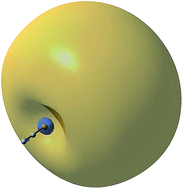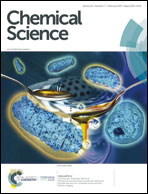Probing the coupling of a dipole-bound electron with a molecular core†
Abstract
A dipolar molecule can weakly bind an electron in a diffuse orbital. However, the spin–orbit coupling between this weakly bound electron and the electrons in the molecular core is not known. Here we probe this coupling using the linear C2P− anion with the 3Σ+ ground state, which possesses dipole-bound excited states because neutral C2P (2Π) has a sufficiently large dipole moment. Photodetachment spectroscopy and resonant photoelectron spectroscopy are used to probe the nature of the dipole-bound states. Two dipole-bound excited states are observed with a binding energy of 37 cm−1, corresponding to the two spin–orbit states of neutral C2P (2Π1/2 and 2Π3/2). The current study demonstrates that the weakly bound electron in the dipole-bound excited states of C2P− is not spin-coupled to the electrons in the C2P core and can be considered as a quasi-free electron.



 Please wait while we load your content...
Please wait while we load your content...